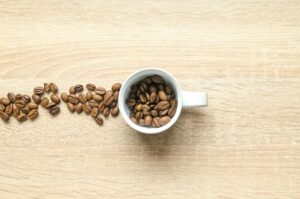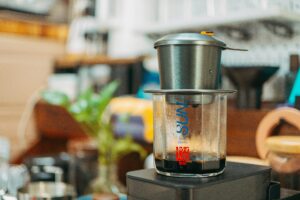Are you a coffee lover who’s been disappointed by a weak, watery cup of joe? You’re not alone. Many people struggle to brew a robust and flavorful cup of coffee, even if they have the best beans and equipment. This article will help you understand why your coffee might be watery and how to fix it. We’ll cover everything from the grind size to brewing techniques, ensuring you never have to suffer through a lackluster cup again.
The Importance of Coffee Strength
What Does Watery Coffee Mean?
Watery coffee is a common problem that arises when the coffee lacks the strong, bold flavors that most people expect. Instead, it tastes diluted and weak. This often leaves you questioning where you went wrong in your brewing process.
Why Coffee Strength Matters
For coffee lovers, the strength of the coffee is crucial. A strong cup of coffee delivers a rich, full-bodied experience that engages your senses and provides that much-needed caffeine boost. Weak coffee can be unsatisfying and may even affect your mood and productivity.
How Coffee Gets Weak
Several factors can contribute to watery coffee, from the type of beans you use to the brewing method. Understanding these factors can help you identify what’s going wrong and how to correct it.
Common Reasons for Watery Coffee
Incorrect Grind Size
One of the most common reasons for weak coffee is using the wrong grind size. If your coffee grounds are too coarse, water will pass through them too quickly, resulting in a weak, under-extracted brew.
Wrong Coffee-to-Water Ratio
Another frequent culprit is using too much water or not enough coffee. The ideal coffee-to-water ratio is essential for a balanced and flavorful cup. Too much water dilutes the coffee, while too little coffee means there aren’t enough grounds to extract a strong flavor.
Inadequate Brewing Time
Brewing time is another critical factor. If the water doesn’t spend enough time in contact with the coffee grounds, the result will be a weak brew. Each brewing method has its optimal brewing time, and getting this right is key to avoiding watery coffee.
How to Fix Watery Coffee
Adjusting Grind Size
Start by adjusting the grind size. If you’re using a drip coffee maker or a pour-over method, opt for a medium grind. For French press, go for a coarse grind, and for espresso, use a fine grind. Experimenting with different grind sizes can dramatically change the strength of your coffee.
Perfecting the Coffee-to-Water Ratio
A common rule of thumb is to use one to two tablespoons of coffee for every six ounces of water. However, this can vary based on personal preference and the type of beans you’re using. Adjust the ratio until you find the perfect balance for your taste.
Optimal Brewing Time
Different brewing methods require different times. For example, a French press typically needs around four minutes, while a pour-over might require between two to three minutes. Make sure to follow the recommended brewing times for your chosen method to ensure a strong, flavorful cup.
The Role of Coffee Beans
Quality Matters
Always invest in high-quality coffee beans. Cheap, low-quality beans can lead to a weak and uninspiring cup of coffee. Look for fresh, high-quality beans from trusted sources.
Freshness is Key
Coffee beans lose their flavor over time. Always use fresh beans and store them properly in an airtight container to maintain their quality. Stale beans can contribute to a weak and watery coffee.
Roast Levels
The roast level of your coffee beans also plays a role in the strength of your coffee. Darker roasts tend to produce a bolder, richer flavor, while lighter roasts can be more subtle. Choose a roast level that suits your taste preferences.
The Brewing Process
Water Temperature
The temperature of the water you use is crucial. Ideally, water should be between 195°F and 205°F. Water that is too hot can scald the coffee, while water that is too cool will under-extract it, leading to a weak brew.
Consistent Stirring
Stirring the coffee grounds during brewing ensures even extraction. This is particularly important for methods like the French press or Aeropress. Consistent stirring can help avoid weak spots in your coffee.
Pre-Infusion or Blooming
If you’re using a pour-over method, pre-infuse or bloom your coffee. This involves pouring a small amount of hot water over the grounds before the actual brewing process begins. This step allows the coffee to degas, leading to better extraction and a stronger flavor.
Nestle Coffee mate Coffee Creamer

- Caramel
- Concentrated Liquid Pump Bottle
- Non Dairy
- No Refrigeration
The Equipment You Use
Grinder Quality
A good quality grinder is essential. Burr grinders are generally better than blade grinders because they produce a more consistent grind size. Consistency in grind size ensures even extraction and a stronger cup of coffee.
Suitable Coffee Maker
The type of coffee maker you use also matters. Drip coffee makers, French presses, and espresso machines all produce different results. Choose a coffee maker that aligns with your taste preferences and brewing style.
Regular Maintenance
Keep your coffee equipment clean. Residual coffee oils and old grounds can affect the taste and strength of your coffee. Regular cleaning ensures your equipment always performs at its best.
Experimenting with Recipes
Try Different Methods
Don’t be afraid to try different brewing methods to find what works best for you. Whether it’s a French press, pour-over, or espresso machine, each method has its unique way of extracting flavors.
Adjust Proportionally
When experimenting, adjust one variable at a time. Change the grind size, then test. Next, try adjusting the coffee-to-water ratio. This methodical approach helps you pinpoint exactly what makes your coffee watery and how to fix it.
Keep a Coffee Journal
Maintain a coffee journal to track the different variables and their outcomes. Note the grind size, coffee-to-water ratio, and brewing time for each batch. Over time, you’ll develop a personalized formula for the perfect cup.
The Impact of Water Quality
Use Filtered Water
The quality of the water you use can significantly affect the taste and strength of your coffee. Always use filtered water to avoid impurities that can alter the flavor.
Mineral Balance
Water with too many minerals (hard water) or too few (soft water) can impact the extraction process. Aim for balanced mineral content to ensure optimal flavor extraction.
pH Levels
The pH level of the water should be around 7.0, which is neutral. Water that is too acidic or too alkaline can affect the taste and strength of your coffee. Testing and adjusting the pH can lead to better results.
Frequently Asked Questions
Why is my coffee watery even with fresh beans?
If you’re using fresh beans and still getting watery coffee, check your grind size and brewing time. These are often the culprits behind weak coffee.
Can tap water affect my coffee’s strength?
Yes, tap water can contain impurities and minerals that affect the flavor and strength of your coffee. Using filtered water can solve this issue.
What’s the best grind size for a French press?
For a French press, a coarse grind is ideal. This allows for better extraction and a stronger, fuller-bodied coffee.
Conclusion
Watery coffee can be a downer, but fixing it is easier than you might think. By paying attention to the grind size, coffee-to-water ratio, and brewing time, you can significantly improve the strength and flavor of your coffee. Don’t forget the importance of using high-quality beans, the right equipment, and clean, filtered water.
Ready to elevate your coffee game? Start making these adjustments today and savor the difference. For more tips and personalized advice, feel free to reach out to our community of coffee enthusiasts. Happy brewing!






